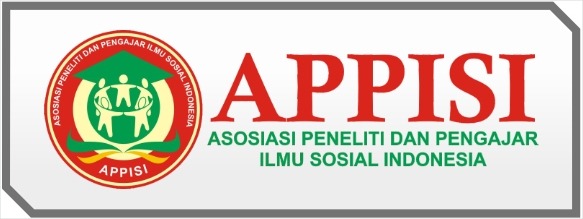THE EFFECT OF DBT THERAPY AND TAZKIYAH AL NAFSON IMPULSIVE SMOKING BEHAVIOR IN STUDENTS
DOI:
https://doi.org/10.61994/jipbs.v2i1.226Keywords:
Impulsive, Smoke, DBTAbstract
Research on impulsivity and smoking shows that smokers are generally more impulsive than non-smokers and that impulsivity is associated with smoking initiation, maintenance, quitting, and nicotine dependence. Therefore, this study aims to determine the effect of BDT (dialectical behavior therapy) and Tazkiyah al-Nafs therapy on reducing impulsivity in active smokers among UIN Raden Fattah Palembang students. The type of research used in this study is qualitative research, and the participants in this study are active smoking students who have successfully quit smoking for at least 24 hours (one day). Two men were randomly selected as participants. This study used observation and interview techniques and consisted of five sessions, each session lasting 30-45 minutes. None of the two participants only quit smoking for 1-3 days (0%), but there was one participant each who managed not to smoke in 4-7 days (50%) and more than 7 days (50%). This result also indicates more success than the previous study where only 86% (6 out of 7 people) quit smoking for at least 24 hours. Despite the limitations, this study was successful in integrating the two types of therapy, and applying them well to help participants in their quit attempts.
References
Agus Santoso. (2021). Mengenal Pendekatan Dialectikal Behavior Therapy. Surabaya: CV. Global Aksara Pers.
Barratt, E. S., Dougherty, D. M., Schmitz, J. M., and Swann, A. C, M., F. G. (2001). Psychiatric aspects of impulsivity. Am. J. Psychiatry 158, 1783–1793.
Cooperman, N. A., Rizvi, S. L., Hughes, C. D., & Williams, J. M. (2019). Field test of a dialectical behavior therapy skills training–based intervention for smoking cessation and opioid relapse prevention in methadone treatment. Journal of Dual Diagnosis, 15(1), 67–73. https://doi.org/10.1080/15504263.2018.1548719
Daruna J.H., Barnes P.A. (1993). A neurodevelopmental view of impulsivity. In: McCown W.G., Johnson J.L., Shure M.B., Editors, The impulsive client: Theory, research and treatment.
Direktorat Jenderal Pencegahan dan Pengendalian Penyakit, & Menular. (2017). Hidup Sehat Tanpa Rokok. Kementrian Kesehatan Indonesia.
Firda Amalia. (2019). Penurunan Maladaptif Coping Melalui Dialectical Behavior Therapy Untuk Meningkatkan Psychological Well-Being Pada Remaja Broken Home. Tesis. Malang: PPS UM Malang.
Harrell, M. B., Pérez, A., Loukas, A., Wilkinson, A. V, Springer, A. E., … Perry, C. L, C., K. R. (2017). Addictive Behaviors The relationships between sensation seeking and aspectrum of e-cigarette use behaviors: Cross-sectional and longitudinal analyses specific to Texas adolescents. Addictive Behaviors, 73(May), 151–157. https://doi.org/10.1016/j.addbeh.2017.05.007
Kemenkes. (2013). Peraturan Menteri Kesehatan Repoblik Indonesia Nomor 28 Tahun 2013 tentang Pencantuman peringatan Kesehatan dan Informasi Kesehatan pada kemasan produk tembakau. Jakarta : Kemenkes RI.
Lerman, C., Coddington, S.B., Jetton, C., Karelitz, J.L., Scott, J.A, P., K. A. (2008). Initial nicotine sensitivity in humans as a function of impulsivity. Psychopharmacol. 200, 529-544.
Masyhuri. (2012). Prinsip-Prinsip Tazkiyatun Nafs dalam Islam dan hubunganya Dengan Kesehatan Mental. Pemikiran Islam, Vol 37, No 2.
Mitchell, H.S. (1999). Measures of impulsivity in cigarette smokers and non-smokers. Psychopharmacol. 146, 455-464.
Patak, M., Shroff, P., Penfold, R.B., Melanko, S., and Duhig, A.M, R., B. (2007). Laboratory and self-report assessments of impulsive behavior in adolescent daily smokers and nonsmokers. Exp. Clin. Psychopharmacol. 15, 264–271.
Pearson, E. S., & Maddison, R., D., L. R. (2018). Smoking prevention in children and adolescents: A systematic review of individualized interventions. Patient Education and Counseling, 101(3), 375–388. https://doi.org/10.1016/j.pec.2017.09.011
Riset Kesehatan Dasar. (2013). Jakarta : Departemen Kesehatan RI, 2013.
Siti Mutholingah. (2021). Metode Penyucian Jiwa (Tazkiyah Al-Nafs) dan Implikasinya bagi pendidikan Islam. Jurnal Ta’limuna 10(01).
Tahlil, T., Adlim, Jannah, S. R., Darmawati, & Dirna, C, F. (2018). PSYCHOLOGICAL WELL-BEING AMONG ADOLESCENT SMOKERS. Syiah Kuala University, Proceeding of The 8th AIC: Health and Life Sciences 2018.
World Health Organization. (2016). World Health Statistic Data Visualizations Dashboard: Tobacco Smoking. http://apps.who.int/gho/data/node.sdg.3-a-viz?lang=en.
Zhou, X. Y., Lu, S. J., Xu, Y., Hu, J. B., Huang, M. L., ... & Wei, N, H., J. W. (2020). Dialectical behavior therapy-based psychological intervention for woman in late pregnancy and early postpartum suffering from COVID-19: A case report. Journal of Zhejiang University-SCIENCE B, 21(5), 394–399.
Downloads
Published
Issue
Section
License
Copyright (c) 2024 Luluk Azizah, Najhan Haque, Rendika Ikhsan R, Agnes Fatimah Salwa, Dea Narenda Oktapia, Dhania Putri Hartono, Neng Nurhasanah

This work is licensed under a Creative Commons Attribution-ShareAlike 4.0 International License.

Journal of Islamic Psychology and Behavioral Sciences by https://jurnal.dokicti.org/index.php/JIPBS/index
is licensed under a Creative Commons Attribution-ShareAlike 4.0 International Licensel














